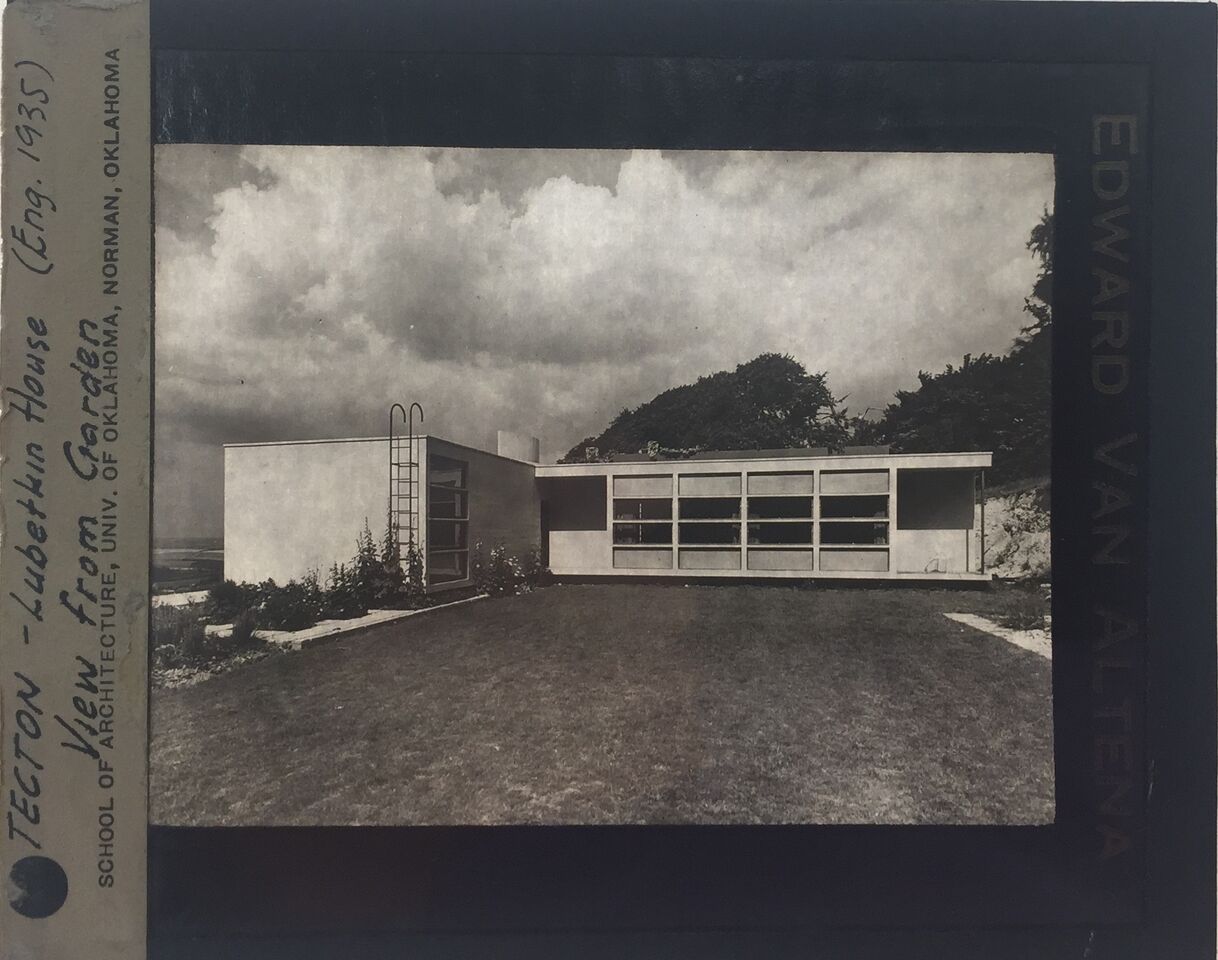Lantern slide, Tecton-Lubtkin House
Lantern slide, Tecton-Lubtkin House

Glass lantern slides date from the 19th century, and persisted in classrooms in the College of Architecture into the mid-20th century. They offereed a way to share visual information to a group of people by projecting it on a screen. Even "renegades" are part of a cumulative cultural environment based on access to a past to resist or reject. The “renegade” work of American School architects and their students did not exist in a vacuum but was informed by a range of design references recorded in these slides. Students were encouraged to experiment and innovate, while developing a design vocabulary that drew on global, vernacular examples. The American School pioneered active learning environments that valued individual creativity and expression above rote learning and mimicry. Even so, students in the OU architecture program in the 1940s and 1950s were exposed to a world of design elements – a Windsor chair, a Mesoamerican vessel, a Gothic façade, much has they had before Goff’s arrival.




